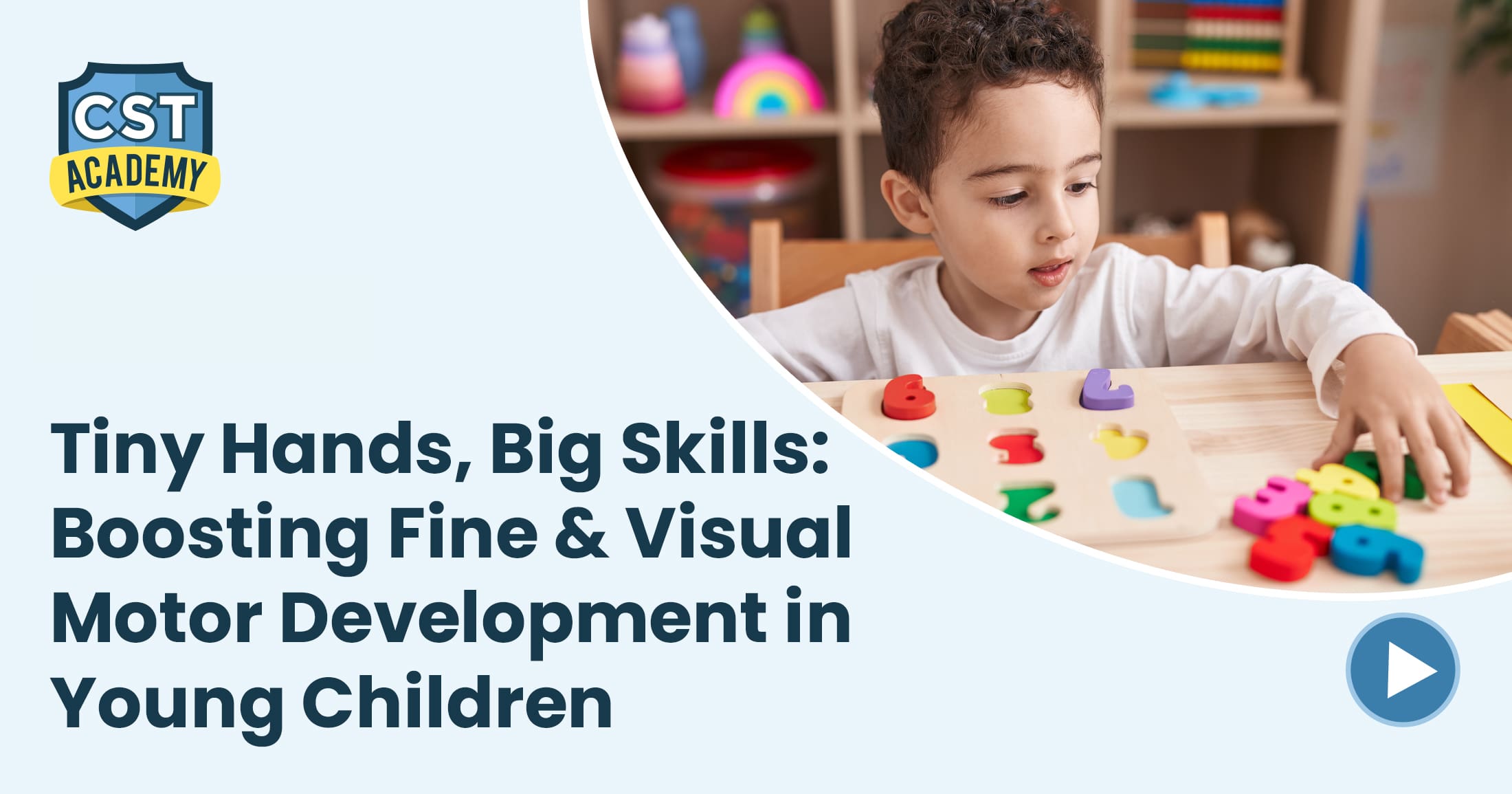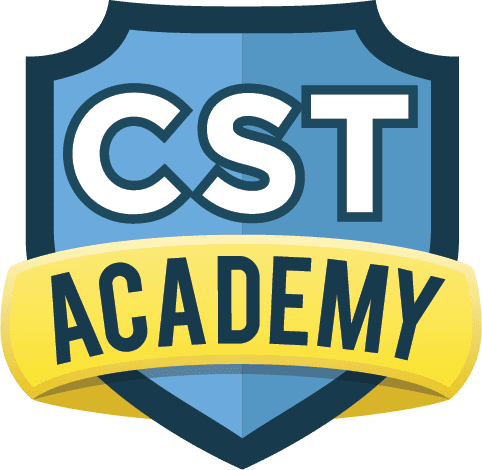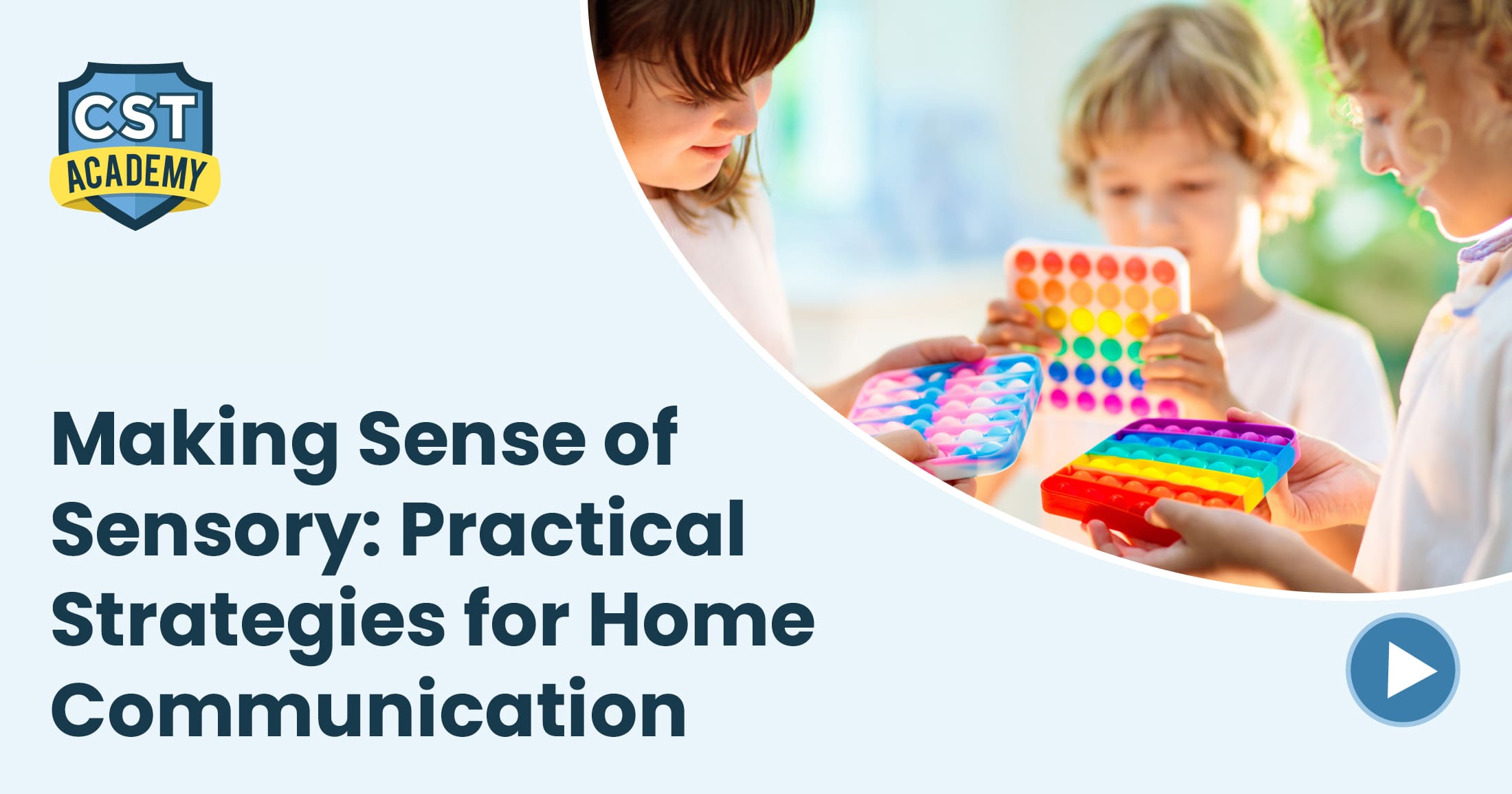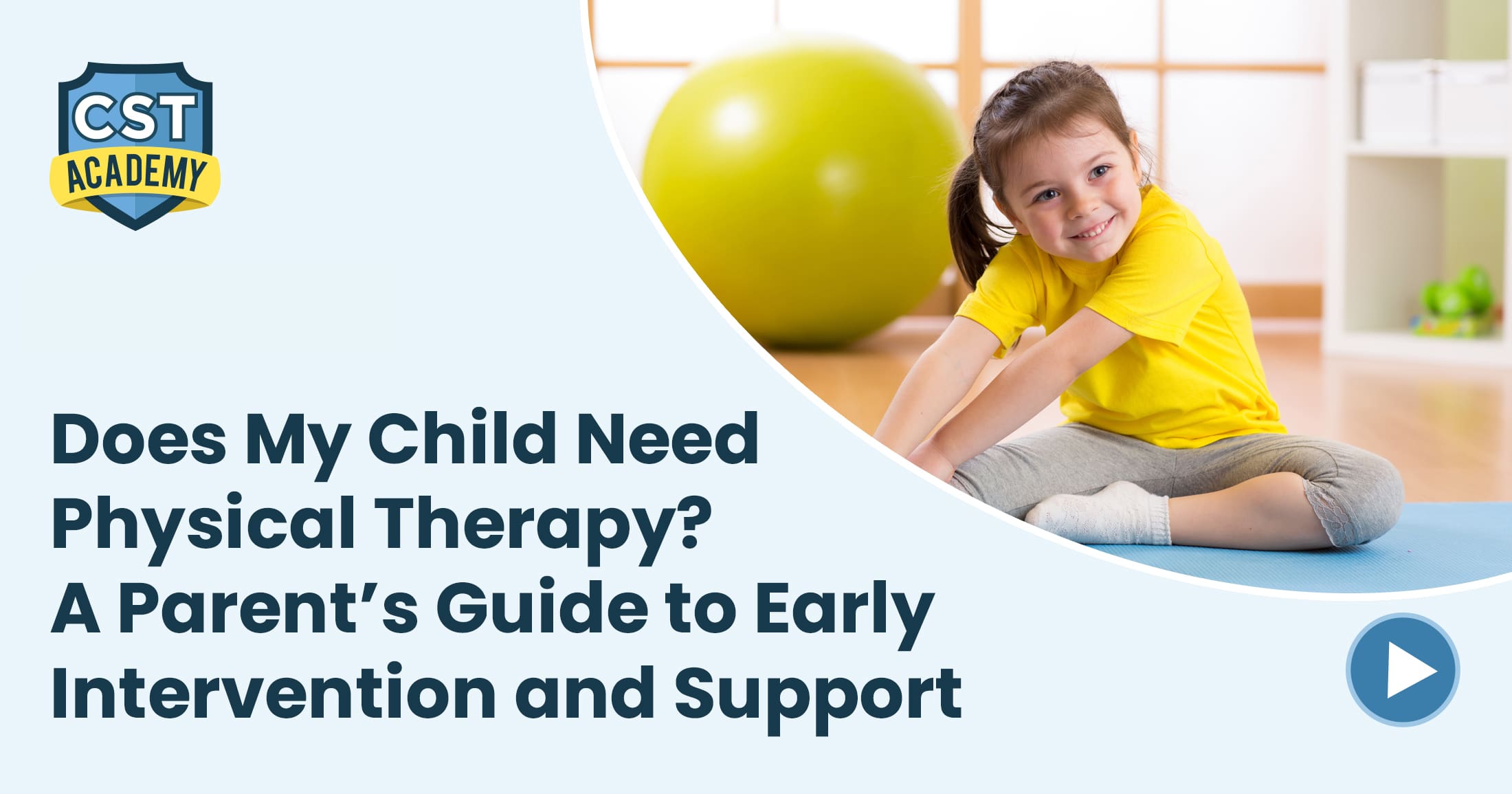Share this Post

Fine and visual motor skills are the foundation for so many important milestones in a child’s life—from grasping a crayon to zipping a jacket or cutting with scissors. At CST Academy, we understand how crucial early support can be when it comes to developing these essential skills. Whether you’re a parent, caregiver, or educator, recognizing the signs of delayed fine or visual motor development—and knowing how to help—can make a lasting difference.
In this article, we explore everything you need to know about promoting fine and visual motor development in young children. You’ll find actionable tips, early red flags to look for, and insights into how therapy can play a life-changing role.
What Are Fine Motor Skills?
Fine motor skills involve the small muscles in the hands and fingers that enable children to perform everyday tasks like:
- Holding a pencil or crayon
- Buttoning shirts or fastening snaps
- Opening containers
- Feeding themselves with utensils
- Manipulating small objects like beads or blocks
Strong fine motor development is directly tied to school readiness, self-care independence, and confidence.
What Are Visual Motor Skills?
Visual motor skills—also known as visual-motor integration—are the abilities that allow a child to coordinate what they see with how they move. These skills help children:
- Copy shapes, letters, and numbers
- Catch or throw a ball
- Complete puzzles
- Navigate spatial relationships
Together, fine and visual motor skills create a powerful foundation for success in both academic and everyday environments.
Signs Your Child May Need Extra Support
Early identification is key to helping children thrive. Some common signs that a child may benefit from fine or visual motor development support include:
- Difficulty holding or controlling writing tools
- Avoidance of tasks that involve cutting, coloring, or drawing
- Poor hand-eye coordination (e.g., trouble catching a ball)
- Using a whole hand rather than fingers to manipulate small objects
- Struggles with dressing or feeding independently
- Fatigue during short writing or drawing activities
How to Boost Fine Motor Development at Home
There are plenty of fun, everyday activities that parents and caregivers can do to support skill development:
- Playdough & Putty Play – Strengthens hand and finger muscles
- Sticker Activities – Builds finger dexterity and precision
- Lacing Cards & Beads – Enhances coordination and bilateral skills
- Cutting Practice – Try safety scissors and guided lines
- Building with Blocks or LEGOs – Develops control and spatial awareness
- Tweezers & Tongs – Pick up small objects to work on pincer grasp
Supporting Visual Motor Integration Through Play
Encouraging visual-motor skills doesn’t have to feel like therapy—it can be engaging and fun:
- Maze and Dot-to-Dot Activities – Promote tracking and planning
- Copying Shapes – Start with circles and lines, progressing to letters
- Ball Games – Roll, toss, or bounce balls of different sizes
- Obstacle Courses – Challenge coordination and body awareness
- Puzzles and Pattern Matching – Strengthen visual discrimination
The Role of Occupational Therapy in Fine and Visual Motor Development
When additional support is needed, pediatric occupational therapy can be life-changing. At CST Academy, our occupational therapists work one-on-one with children to develop customized strategies that build the muscle strength, coordination, and control needed for long-term success.
We focus on making therapy engaging and rewarding through purposeful play, multisensory learning, and targeted interventions. Therapy helps children achieve independence in self-care, improves academic performance, and enhances confidence in their abilities.
Why Early Intervention Matters
The earlier a child receives support, the more progress they can make. Early intervention for fine motor delays can prevent frustration, build school readiness, and empower children to participate more fully in daily life.
Whether you’re just starting to have concerns or already know your child needs help, CST Academy is here to guide you every step of the way.
CST Academy’s Approach to Supporting Development
At CST Academy, we offer:
- Individualized Occupational Therapy Services
- Integrated Therapeutic Preschool & Kindergarten Programs
- Collaborative Care with Speech and Physical Therapists
- Expert Evaluations to Identify Developmental Delays
Our team of specialists works closely with families to create supportive environments that foster meaningful progress in fine motor, visual motor, and overall developmental skills.
Take the Next Step
If you’re concerned about your child’s fine or visual motor development—or just want to give them an extra boost—we invite you to explore CST Academy’s range of services.
Discover Our Pediatric Therapy & Autism Care
ABA Therapy
Support for children with autism.
Autism Evaluation
Expert assessments to identify child needs.
Pediatric Therapy Services
Speech, Occupational, Feeding, and Physical Therapy.
Therapeutic Preschool
A classroom environment designed for early learners with unique needs.

Find the Best Care for Your Child




